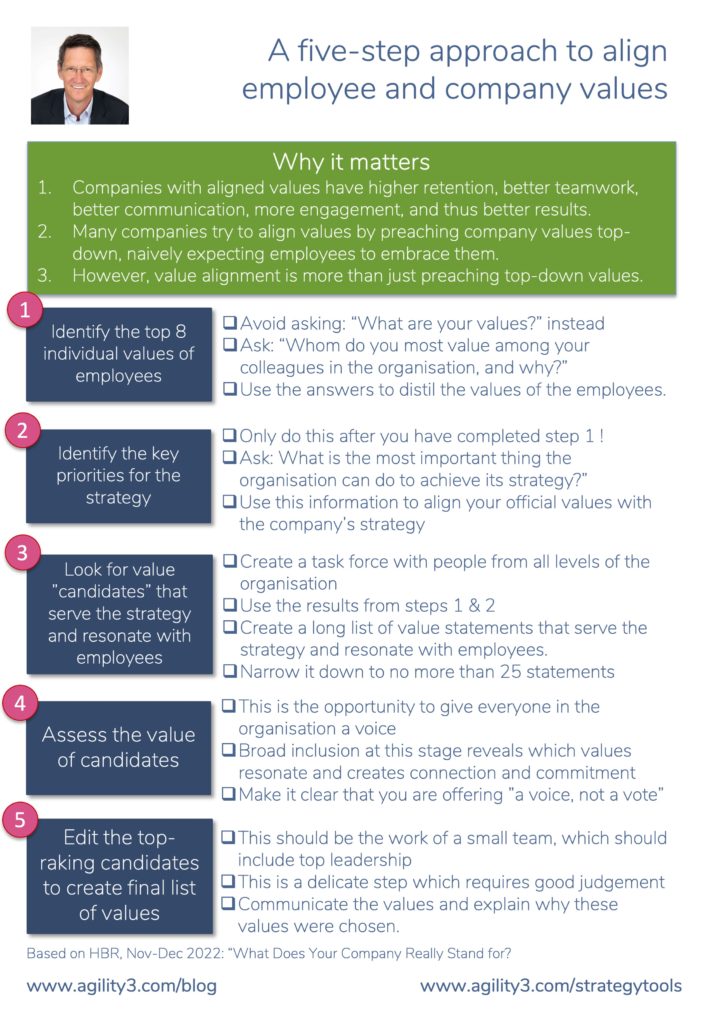Why it matters
👉 Companies with aligned values have higher retention, better teamwork, better communication, more engagement, and thus better results.
👉 Many companies try to align values by preaching company values top-down, naively expecting employees to embrace them.
👉 However, value alignment is more than just preaching top-down values.
In their 2022 HBR Article, “What Does Your Organisation Really Stand For?”, Paul Ingram and Yoonjin Choi present a 5 step process to align corporate values with the value of their employees.
What I like about the article is that the authors advocate against just pushing down values top-down. Instead, they recommend a collaborative process to create a set of values that are not only strategically relevant but also resonate with employees.
Here is the process in a nutshell
The Process
1️⃣ Identify the top 8 individual values of employees
– Avoid asking: “What are your values?” instead
– Instead, ask. “Whom do you most value among your colleagues in the organisation, and why?”
– Use the answers to distil the values of the employees.
2️⃣ Identify the critical priorities for the strategy
– Only do this after you have completed step 1 !
– Ask, “What is the most important thing the organisation can do to achieve its strategy?”
– Use this information to align your official values with the company’s strategy.
3️⃣ Look for value ”candidates” that serve the strategy and resonate with employees
– Create a task force with people from all levels of the organisation.
– Use the results from steps 1 & 2.
– Create a long list of value statements that serve the strategy and resonate with employees.
– Narrow it down to no more than 25 statements.
4️⃣ Assess the value of candidates
– This is the opportunity to give everyone in the organisation a voice.
– Broad inclusion at this stage reveals which values resonate and create connection and commitment.
– Make it clear that you are offering ”a voice, not a vote.”
5️⃣ Edit the top-raking candidates to create a final list of values
– This should be the work of a small team, which should include top leadership
– This is a delicate step which requires sound judgement
– Communicate the values and explain why these values were chosen.

Invitation for action
❓ What is your experience with using values?
– Does your organisation have a communicated set of values?
– Are these evaluated from time to time?
– Does your organisation push down value top-down, or are there bottom-up elements, as suggested in this post?
Photo by Eugene Chystiakov on Unsplash